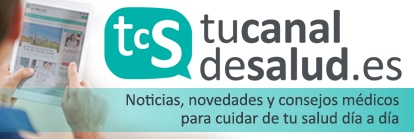Dermatology and Capillary Medicine
The fall of hair can be seasonal, temporary, or it can be a more complex pathology.
a specialized diagnosis is the only one that can dictate the particular lack, and trichology is the science that deals with the evaluation and treatment of alopecia and hair problems.
Dermatologists are trained to diagnose and treat any type of alopecia or hair problem, but dermatologists-trichologists have a broader specialization in aspects related to the scalp and hair follicles. In this sense, our capillary medicine unit is directed by dermatologists, trichologists, specialists in hair transplants and members of the international association of capillary surgery ishr (international society hair restoration). We work and actively research to always offer the most innovative, least invasive and most effective treatments.
How do we treat capillary problems in the Capillary Unit of Quirónsalud Valencia?
Our dermatologists specializing in capillary medicine (trichology) make their diagnosis through:
- Medical assessment
- Trichoscan: Digitalized analysis that allows to measure the density of the hair, and determine what proportion is in the anagen growth phase (phase of active hair formation) or telogen (resting phase during which hair loss occurs). The result of this test assesses the degree of alopecia and will provide the most appropriate personalized treatment. The trichoscan is a method that combines the epiluminescence microscope with the automatic analysis of digital images that also allow an exhaustive monitoring of the patient's evolution.
There are several types of treatments according to the hair pathology:
- Oral and topical treatment
- Platelet mesotherapy: Platelet-rich plasma is injected into the dermis of the scalp, into bioactive proteins and growth factors that stimulate tissue regeneration and hair follicle growth.
- MesoActive IMR: A cocktail of vitamins and drugs of proven medical efficacy in androgenetic alopecia that stimulate tissue regeneration and hair follicle growth is injected into the capillary dermis.
- Hair Transplant
The technique of mechanized manual hair transplantation that we use allows us to extract hair from the entire area of the donor head, as well as from donor body areas, and it uses 0.8 mm or smaller incision diameters in the extraction of the follicular units, unlike the totally robotic transplant technique such as the Artas that uses incision diameters greater than 1mm for the extraction of follicular units and are only able to extract hair from the posterior area of the head.
Hair Transplant techniques:
NON SHAVEN FUE technique
Allows an individual extraction of follicles from different areas without it being necessary to shave the donor area, this technique is performed without suturing or cutting the donor area, and without the need for invasive surgery.
FUE technique
Allows the individual extraction of hair follicles from various donor areas after shaving the area. This technique is performed without suturing or cutting the donor area, and without invasive surgery
Our mechanized manual transplants technique has better results in clinical trials, is less painful, less invasive, does not require scars or sutures and is cheaper for the patient than robotic techniques.
Our Capillary Medicine Unit is directed by the dermatologist Jose Maria Ricart, member of the ISHR (International Society Hair Restoration).
Hospital Quirónsalud Valencia
Avda. Blasco Ibáñez, 14
46010 Valencia Valencia
© 2024 Quirónsalud - All rights reserved


























